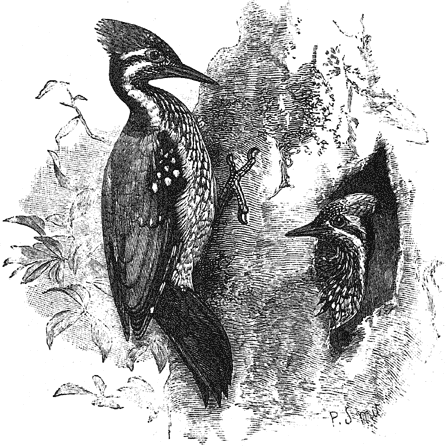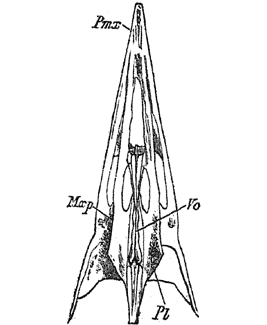|
Page 07 | prev page next page | |
|
Order IlI. PICI (Woodpeckers, Piculets & Wrynecks)
With the Woodpeckers we commence a series of bird-families sometimes combined under the general name of Picariae, but exhibiting such complicated relations with each other and with other groups of birds that their classification is by no means finally settled. In the present work it appears best to leave them in a number of small orders, each frequently consisting, as in the present instance, of a single family. | ||
|
The Woodpeckers were formerly associated under the name Scansores with Barbets, Cuckoos, Parrots, and other birds having two hind and two fore toes, the fourth digit being directed back wards as well as the first or hallux. But the Parrots have long been known to differ from the others widely in structure, and were classed apart by Blyth in his Catalogue in 1849. Huxley, in his important paper 'On the Classification of Birdsí (P.Z.S. 1867, pp.448,467), distinguished the Woodpeckers as a group called Celeomorphae, equal in rank to the Accipitrine birds or the Parrots, and the distinction was emphasized by Kitchen Parker, who separated Woodpeckers and Wrynecks as Saurognathae, on account of what he regarded as the reptilian characters presented by the bones of the palate. The view that Woodpeckers and Wrynecks form a separate group has been accepted by many recent writers, notably by Sundevall, Sclater, Newton, Sharpe, and Gadow, though not by Garrod, by Furbringer, nor by Seebohm. The following are the principal characters:
Vomer represented by several distinct paired lateral rods; maxillo-palatines small, widely distant from each other (fig. 9). The flexor longus hallucis, after sending off a vinculum to the flexor perforans digitorum, is divided, one branch going to the fourth toe, the other being again divided to supply the first and second, whilst the flexor perforans digitorum runs to the third alone (fig. 22). The same arrangement is found in the Barbets, Indicators, Toucans, and some other families.
Sternum with two notches behind on each side of the keel; the manubrial process
bifurcate as in the Passeres. The femoro-caudal and semitendinosus muscles present;
ambiens and accessory femoro-caudal absent. Caeca wanting or quite rudimentary. In
pterylosis, the spinal feather-tract is well defined on the back and forked on the
lower, not on the upper back. Oil-gland tufted, not nude as in Passeres. | ||
| prev page :: next page | ||
 birding.in
birding.in
| Birds | Bird Diagram | Ornithology | Indian Sites | Bird Watching | Migration | North India | Birds of India | Haryana |
All rights reserved. Copyright © 2005-2013 Birds and birding in India. Disclaimer
website: Free Java Guide & Tutorials

